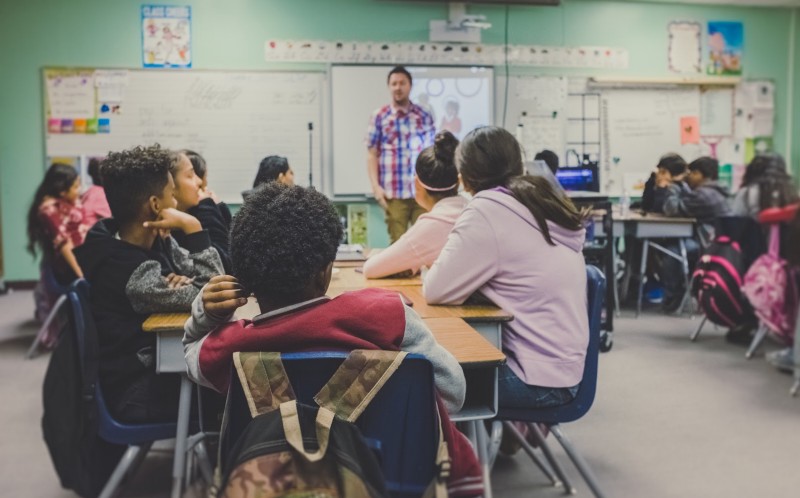New York Times best-selling author Tim Ferriss reminds us of the power of a question when he published his notorious book Tribe of Mentors a few years back. While Ferriss shares 11 simple questions he asks over 100 iconic celebrities, perhaps the real lesson lies in the fact he was brave enough to ask.
The power of a question is a phenomenon studied and discussed since late antiquity through modern times. “Wonder is the beginning of wisdom,” says Socrates. Mandy Len Catron believes 36 questions can make anyone fall in love. It is no doubt the questions we have regarding the unfamiliar that rouse the remarkable journey of learning about someone, or something, new.
So it is no surprise that most progressive learning movements is often the hardest part of the journey.
A.J. Juliani discusses the 20% project, based off of Google’s 20% time, where 20% of his class time is dedicated toward self-directed exploration. Students simply pursue their own burning questions, passions and curiosities. Katherine von Jan states “real break-through happens when we are free from others’ expectations and driven by individual passions.” Promoting such personalized, self-directed learning experiences is a necessary endeavor in line with what is true to industry practice today.
So what emerges from student-driven, rather than teacher-driven, questioning?

Questioning as a power tool: Brain research
When a question is posed by a teacher, “instinctive elaboration” is triggered in the student. The brain’s thoughts are consumed as it is processing the answer to the question posed. Unable to think about anything else, a student’s brain is momentarily “hijacked” into only contemplating that single answer. The more questions teachers’ pose, the more hijacked students’ brains become.
Every time we, as teachers, ask a question, we are stealing a learner’s opportunity to ask it themselves.
This doesn’t mean teachers should stop asking questions, but rather we should ask better questions, or be made aware of the types of questions we are asking. To understand questioning strategies is exceedingly important, especially in knowing the immense responsibility that lies within the inquisitor. “One thing that makes us fully human,” Tony Wagner tweets, “is the ability to ask important questions, but it is a learned skill.” Modeling good questioning strategies in the classroom is a learned skill, and one that too often flies under the radar.
Schools that champion inquiry-based pedagogies understand that asking important questions, when done well, deepens critical thinking, relevance and learning. Invite student voice and curiosity into the curriculum, and student motivation and agency naturally increase as well. Simply by asking questions, “we naturally improve our emotional intelligence, which in turn makes us better questioners — — a virtuous cycle,” claims Alison Wood Brooks and Leslie K. John with Harvard Business Review. Despite this, their research finds “most of us don’t ask enough questions, nor do we pose our inquiries in an optimal way.” So if asking better questions is the answer, how can teachers, and students, best learn the art of asking?
We should first realize the influence questions have on the decision-making process. Once prompted, the brain contemplates a behavior, “which increases the probability that it will be acted upon.” So the more the brain contemplates a behavior, the more likely it is that we will engage in it. Questioning strategies, in turn, have the power to change our behavior.
Brooks and John also find that “people have conversations to accomplish some combination of two major goals: information exchange (learning) and impression management (liking). Asking questions achieves both — it unlocks learning and improves interpersonal bonding.”

So if questions can change behavior, unlock learning and improve interpersonal bonding, what approaches can we take to help all stakeholders ask better questions in any learning context? The Teaching and Learning Center at University of Nebraska-Lincoln (UNL) shows that on average, teachers ask questions in which “about 60 percent require only recall of facts, 20 percent require students to think, and 20 percent are procedural in nature.” This UNL questioning strategy resource helps clarify between higher order questions and recall-oriented questions. Here are five quick tips to consider while stepping up your question game.
1. Keep questions open
Closed questions result in a simple response and should only be used to check retention, whereas open questions promote discussion and encourage deeper interaction.
2. Favor follow-up questions
If students take the lead on driving questions, follow-up questions (used to probe, redirect and reinforce), can help students move past their first response into the clarification and refinement process. Modeling follow-up questioning strategies allow for feedback loops and further inquiry in the design-thinking model.
3. Try the “how might we” method
This method is recognized as the secret phrase top innovators use and is especially powerful when used for group or team inquiries. How indicates the possibility of answering the problem, might suggests there’s more than one way to solve the problem, while we infers a team approach to finding the solution.
4. Follow with application
There is no better way of understanding what the next best question to ask is than to apply what you learn in a new context, different than in which you learned it. Known as the prototyping stage in the design-thinking process, or the project phase in PBL, application allows for follow-up questions to naturally evolve.
5. Beware the “naked why”
Known as “the most powerful and dangerous question in the world,” Kevin Eikenberry warns us to beware the naked why. What, you may ask, is the naked why? When the question “why” stands alone, it has the power to assign blame or to be misinterpreted as an accusation. In order to avoid misdirected negativity, provide context and focus on asking higher order questions or follow-ups.
Don’t ask, Don’t get
So, what if we were all courageous enough to ask our own tribe of mentors any questions we wish? Better yet, imagine we are all equipped to ask the right questions when opportunity strikes. Ferriss states, “Life punishes the vague wish and rewards the specific ask.” If we don’t ask, we won’t get.
Question the questions being asked in your classroom. Creativity, innovation and design rely on a desire to seek out novel information. We all have a chance to rewire our classrooms, whether PBL, inquiry-based, maker-space or other, so let’s reconsider the power tools, or power questions, that matter most. Inquiry, after all, is our most important asset and motivator for deep, lifelong learning.

